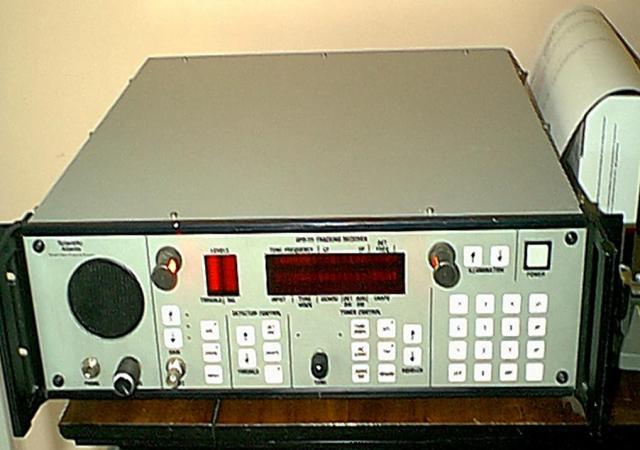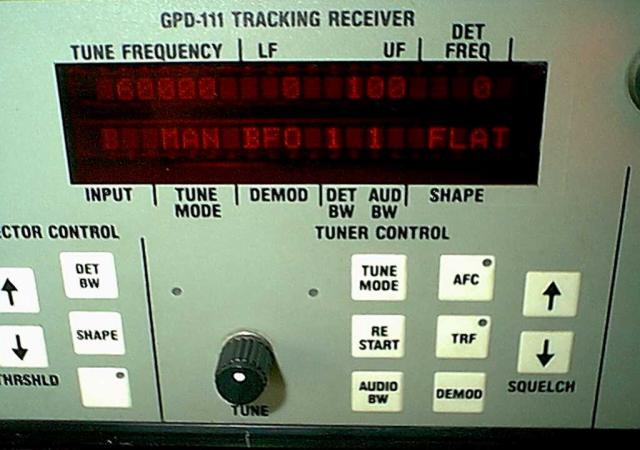|
The Scientific Atlanta GPD-111
Tracking Receiver is a receiver covering the frequency range of 200Hz
to 100kHz. It is capable of automatically-or manually-scanning for,
detecting, and tracking signals within its frequency range. As such,
it can receive ELF, VLF, and LF signals with detection of the
following modes: AM, USB, LSB, and variable pitch BFO (e.g. CW)
signals. It displays the
frequency of the signal, and has wideband equalization of gain vs
frequency, along with a noise-responding AGC, to maintain optimal
signal detection thresholds.
Detection signal shape and bandwidth are
selectable. Adjacent Sideband suppression is at least 40dB below
bargraph full scale deflection. All other signals are suppressed at
least 55dB below the specified noise-floor-to-prevent-detection.
Automatic Frequency Control (AFC) to 10 Hz, and
True Restored Frequency (TRF) options round out its capabilities.
It has three selectable audio bandwidths: 1 kHz, 2
kHz, & 8 kHz; and a Low Pass Filter prior to the AGC and detector A/D
processing, to provide anti-alias filtering (at greater than 40 dB
below full scale), to prevent out-of-band signal foldback into the
audio processing spectrum.
The unit has both Balanced
(dual transformer-coupled, summed inputs) and Unbalanced (>10,000
ohms) at an expected Level of 10mV to 3Vrms.
These receivers were specially designed for
operation on US Navy Trident Missile Submarines. How they got into the
surplus market, I'll never know. I suppose something better came
along. They were in service in 1990-and may still be. Mine came with a
pallet-load of other stuff, bought by a friend in the surplus
business, who then called me. I know of one other in civilian
hands-although there may well be plenty of others. Also, I suspect
there is one 'loose' in Japan, since there is a website there which
mentions them. I have received no reply to my inquiries to that
person. |
![]() This website is
always
under construction...
This website is
always
under construction...
![]()











